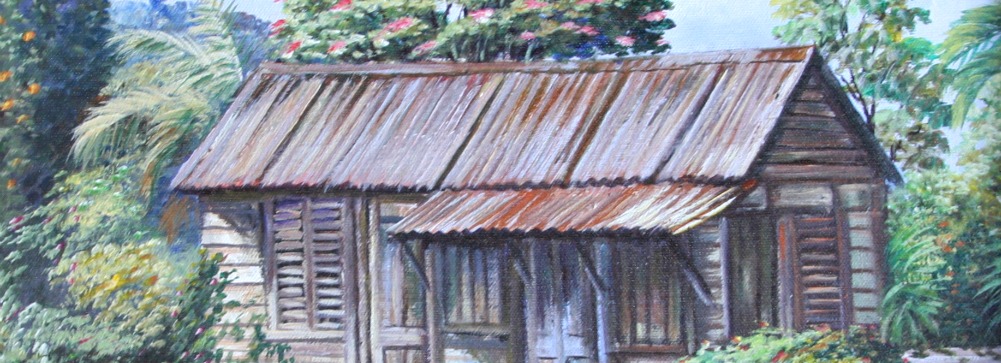Since graduating from the Jamaica School of Art (now the School of Visual Arts at Edna Manley College) in 1984, the artist reports that he has enjoyed good response from the public and is even able to recall previous showings of his work that were sold out.
Campbell’s imagery for which he is best known is the sceneries where old houses are the main subjects. The quaint structures are represented with sincerity that creates charming scenes of old time architecture. The painter admits that he is mostly attracted to old buildings as he sees himself as “a historian, recording things of the past.” He recalls memories of structures that were homes for many persons and that still can be found.
Favourite Subject
The titles of the paintings in the present show tell us that he has travelled across the island St. Elizabeth, Trelawny, Manchester, Clarendon, St. Ann, St. Mary and St. Catherine in search of his favourite subject. A few portraits (old people and children), two river scenes and still life arrangements of old clay and enamel vessels handed down to him from his grandmother are hung alongside the old house images.
The still lifes in particular embody an intimate storytelling aura of their own that recalls the steadfast fascination of Italian painter Giorgio Morandi with simple objects painted without the colourful flamboyance of Impressionist painter Paul Cezanne or Jamaican artist Albert Huie but infusing the serenity of Frenchman Jean Baptiste Simeon Chardin.
The oil and acrylic images are sometimes combined with selective texture that simulates life scenes by utilising a consistent gritty texture that appears to be sand over the entire surface of the canvases. Overall, Campbell uses an almost monochromatic palette a pervasive brown fills the scenes, representing the hues of the clay pots, skin, brick and wood. This palette needed to be enriched with other colours to show the shifting tones on the aged subjects.
The colour temperature changes little in the pictures with regard to the direction and strength of light. In fact, the direction of light is often unclear thereby creating flat or barely three-dimensional forms and ultimately scenes devoid of drama. Atmospheric perspective (the subtle transitions of dark to light tones in keeping with the distance of objects) gives way to linear perspective.


